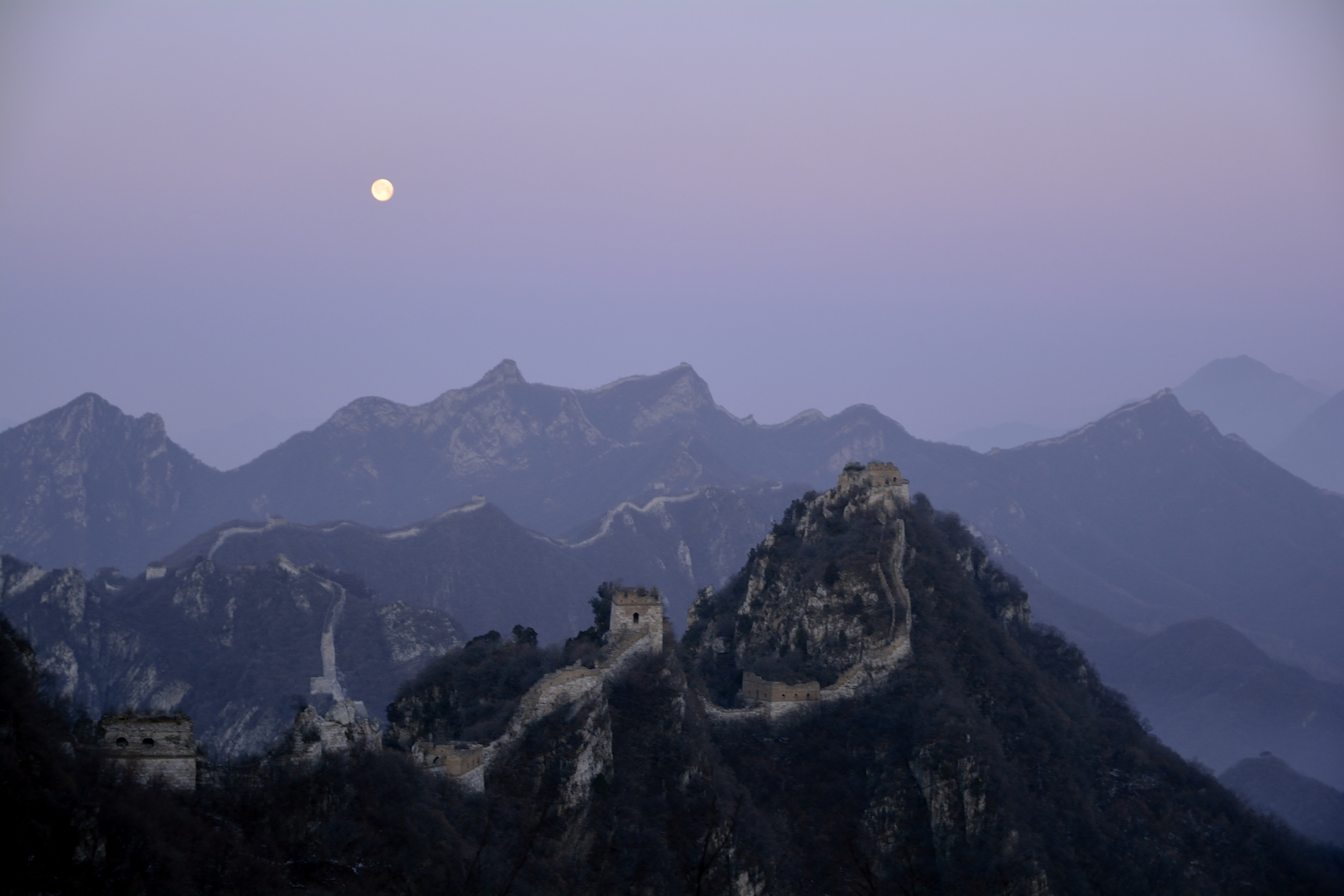
Copyright:Francis Audet
原文:
Last Friday, an almost Full Moon rose as the Sun set, over this mountainous landscape north of Beijing, China. Also near apogee, the farthest point in its elliptical orbit around planet Earth, it was this year’s smallest and faintest Full Moon. The Jiankou section of the Great Wall of China meanders through the scene, the ancient Great Wall itself the subject of an older-than-the-space-age myth that it would be visible to the eye when standing on the lunar surface. But even from low Earth orbit, the large scale artifact of human civilization is very difficult to identify. At its farthest from our fair planet, the Moon shines brightly in the twilight sky though, posing in the faint, pinkish band known as the antitwilight arch or the belt of Venus.
中文翻譯:
上星期五,當太陽沉落於北京北部的山景之際,幾乎滿月悄然升起。這次的滿月也是今年最小和最暗的,因為它正接近遠日點,即其橢圓軌道中離地球最遠的點。景區中,建築數百年的長城金山段蜿蜒於此,這座古老的長城曾流傳著一個早於太空時代的神話——站在月球表面時,能夠用肉眼看到它。然而,即使在低地球軌道上,這一人類文明的巨大遺跡也極其難以辨認。即使在最遠的距離,月亮在暮 twilight 的天空中熠熠生輝,閃爍著淡淡的粉紅色帶狀光影,這被稱為反暮 twilight 弓或維納斯帶。
#滿月 #長城 #北京 #自然景觀 #反暮 twilight #月亮 #古老神話 #宇宙之美 #Jiankou #GreatWall #VincentBelt #NightSky
來源:NASA每日圖片


